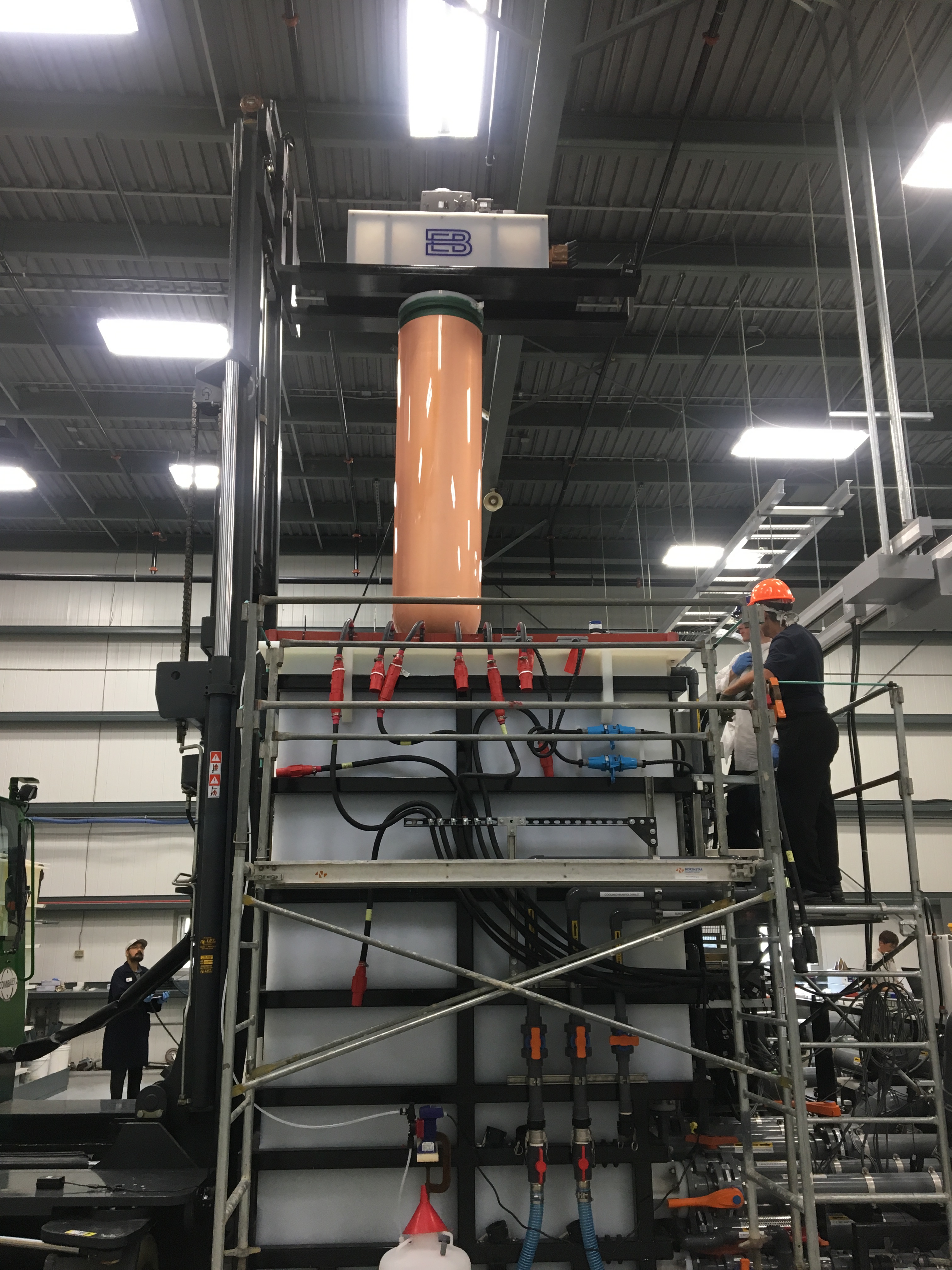The Nuclear Waste Management Organization (NWMO) has designed, developed and fabricated a first-of-a-kind system to clad our used fuel containers (UFCs) with copper through an electroplating process. The copper will prevent corrosion of the steel UFCs, which will eventually be used to contain and isolate Canada’s used nuclear fuel in a deep geological repository.
“The Nanovate Testing System (NTS) tank is purpose-built specifically to coat our used fuel containers with copper,” said Derek Wilson, Chief Engineer and Vice-President of Contract Management at the NWMO. “Many factors – such as temperature, chemical solution and surface finish – can affect the outcome. With careful consideration of these factors, we have had success.”
The NWMO worked with an industry partner to develop the innovative electroplating technologies. After immersing the used fuel container in the copper-based electroplating solution for approximately 10 days, copper cladding four to five millimetres thick forms. Although electroplating has been around for at least 100 years – it is typically used to make copper pennies – this is one of the first adaptations of the technology to create thick cladding.
The NWMO’s progress will also be of interest to others. “This is an opportunity for the NWMO to reinforce our commitment to share knowledge with used nuclear fuel organizations in other countries such as Japan, Switzerland and the United Kingdom,” said Mr. Wilson.
The copper cladded used fuel container is part of the NWMO’s multiple-barrier system (naturally occurring and engineered barriers working together) to ensure safety in a deep geological repository for used nuclear fuel.
These accomplishments represent milestones in the NWMO’s proof test program and help to advance Canada’s plan for the safe, long-term management of used nuclear fuel.

